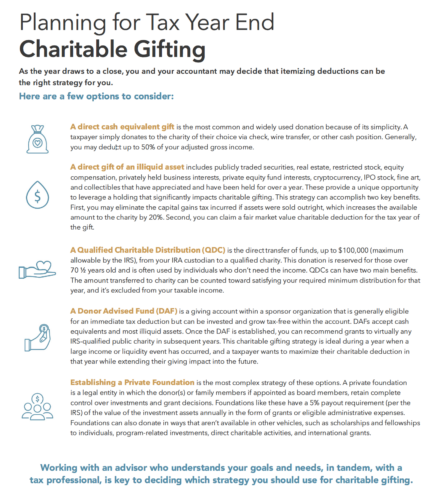
Filing a life insurance claim is a relatively simple process and should be done as soon as possible after the loss of your loved one. Knowing the process is underway may lift some of the financial stress during this time and help you prepare to make decisions about the road ahead. We’ve outlined the process below so you know what to expect.
KEY TAKEAWAYS
WHEN TO FILE | Contact the life insurance company as soon as possible. It generally takes two to eight weeks to process the claim.
WHAT YOU NEED | You need proof of death, the policy information, a claim form, and valid personal ID to file the claim.
PAYOUT OPTIONS I There are different ways a beneficiary may receive a life insurance payout, including lump-sum payments, installment payments, annuities, and retained asset accounts.
Steps for Filing a Life Insurance Claim
STEP 1: GATHER IMPORTANT DOCUMENTS
Be prepared to file your claim by having all of the required documents ready to submit together in order to prevent delays in the payout process. In most cases. you will only need three documents to claim a policy’s death benefit. Depending on the life insurance company, you may be able to do this online or have to submit a paper claims filing.
- Certified Death Certificate – You will need a certified death certificate to file your claim. Usually, you can request a certified copy from the local health department or even through the funeral home. It’s a good idea to request multiple certified copies of the death certificate at the same time as you’ll likely need them for other things like closing accounts.
- Policy Document – This document includes information about the policy, including the policy number, beneficiary name(s), and the death benefit amount. If you’re having trouble finding this document, you can contact the company directly or contact the deceased’s financial advisor.
- Claim Form – You may be able to fill this claim form out online, otherwise contact the company directly. You’ll need information you should be able to find on the death certificate, including the name of the insured and their cause/date/place of death. You’ll also indicate your relationship to the policyholder and likely provide valid identification. Lastly, you need to indicate how you would like to be paid once the claim is processed.
STEP 2: CONTACT THE INSURANCE COMPANY
Life insurance companies don’t automatically process death benefit payments, so you will need to contact them to notify them of the death and file your claim. Once you have the documents listed above ready to go, contact the company that issued the life insurance policy and file your claim.
While there is no time limit to file a life insurance claim, the sooner you file the sooner you will receive the payment. It generally takes anywhere from two weeks to two months for a life insurance company to process a claim.
The insurance company will verify that the policy is still active and has not lapsed due to missed premium payments or expired coverage terms. Next, an agent will confirm if you’re the named beneficiary and may request proof of identity like a valid driver’s license, birth certificate, or Social Security card. If you’re not a U.S. citizen, there may be additional paperwork required.
STEP 3: CHOOSE A LIFE INSURANCE PAYOUT OPTION
There are usually a few options to choose from when you receive a death benefits payout. You can discuss these with your trusted financial advisor if you have questions about which option is best for your circumstances.
- Lump Sum
This is the simplest option in which the beneficiary is paid the entire amount at once. As life insurance benefits are generally tax-free, you won’t need to worry about taxes. - Installments & Annuities
Some beneficiaries may choose an installment-payout or annuity option, in which the proceeds and accumulated interest are paid out regularly over the life of the beneficiary, providing a guaranteed income stream of between five and 40 years. However, you should know that any interest income received is subject to taxation. Depending on the amount of the death benefit, it may make more sense to take the lump sum to avoid paying more in taxes on the interest. Consult your tax advisor for more information about your options. - Retained Asset Account
Instead of a lump sum or regular installments, some insurers may offer beneficiaries of significant policies a checkbook the beneficiary can use to write checks against the balance. Essentially, the insurance company would be acting as a bank or financial institution, keeping the payout balance in an account which would not allow deposits but would pay interest to the beneficiary.
Rejected Claims are Rare
Although uncommon, sometimes life insurance claims are rejected. These rejections are usually due to a lapsed policy, the claimant not being the named beneficiary, the policyholder’s death occurring within a contestability period (usually two years from when the policy goes into effect), or in the event of a suicide or homicide. If the deceased was killed, the insurance company may wait until the beneficiary has been cleared of any wrongdoing before processing the payout.
If you would like to discuss any questions you have about life insurance or other financial matters, please give us a call or submit a request to schedule an appointment to speak with an advisor.
NOT SURE IF YOUR LOVED ONE HAD A LIFE INSURANCE POLICY?
If you’re unsure if your loved one had a life insurance policy, there are a few things you can do to find out. Here are tips from the California Department of Insurance:- Look through the deceased person’s records for policies, including any safety deposit boxes.
- Check bank accounts and canceled checks to see if payment was being made to a life insurance company.
- Contact their previous employer to determine if they had a group life insurance policy through the company.
- Review income tax records for any information about a life insurance policy.
- If you’re in California, check the State Controller's Office Life Insurance Settlement Property Search engine or call them at 800-992-4647. Life insurance companies are required to annually report and deliver property to the California State Controller's Office after there has been no activity on the account or contact with the owner for a period of time specified in the law, generally three years or more.
- Try to track down the information using the National Association of Insurance Commissioners’ Life Insurance Policy Locator Service.





